Step-by-step process of cultivation of garden crops in the estate, advice and recommendations for storage, harvesting, care of soil and plants.
Contents
- Advice for farmers on seeding, planting seedlings
- Tips for truckers to care for planting and eliminating pests
- Tips for gardeners to harvest and prepare the ground for rest
- Tips for collecting and drying the seeds of a new crop, organizing their proper storage
- Tips for harvestingfor winter, conservation and freezing of crops
- Tips for gardeners for storing vegetables and fruits and caring for the site
- Video: useful advice for gardeners and truck farmers
The person is so closely connected and the managerSit on the nature of his destructive and disrespectful attitude to it is fraught with troubles for him also, and respectful - the guarantee of health and rich harvest.
Surprisingly, our ancestors understood this connection by every cell of their body. They passed on their knowledge to their descendants. And then, for many reasons, we lost awareness of it.
Residents of villages, small towns and small towns are engaged in growing vegetables, berries, fruits, herbs, cereals on their land. One in joy is such activities, for the second - it is a vital necessity.
Let's look at the labor of the gardener in terms of the stages of work:
- spring seeding
- summer tillage with shoots, watering, pest control
- autumn harvesting and preparing the ground for rest
- drying the seeds of the new crop, organizing their proper storage
- workpiece for the winter,preservation and freezing
- storage of the earth's grants
Consider the advice of experienced truck farmers for each of the above stages.
Advice for truck farmers on seeding, planting seedlings
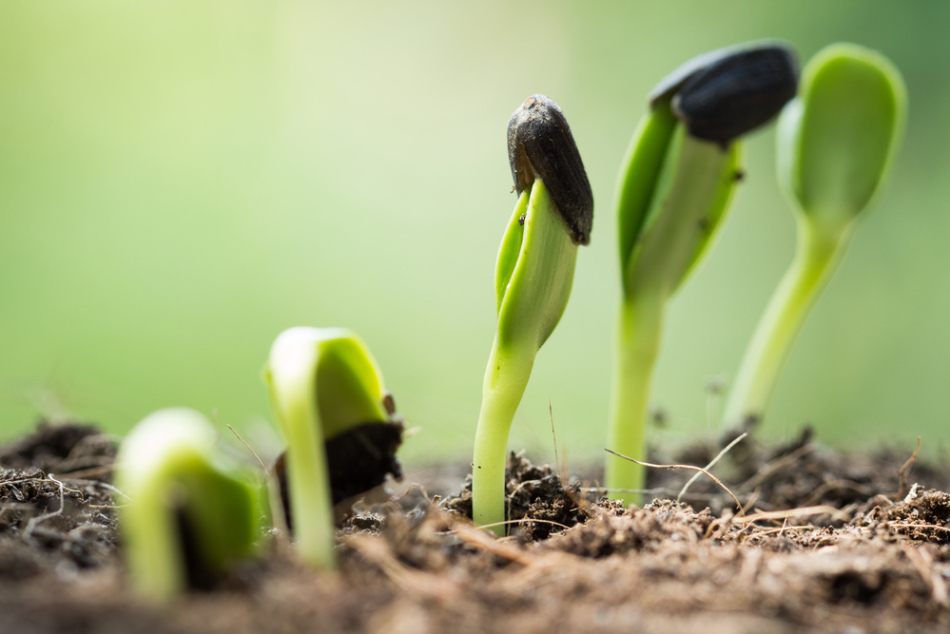 young shoots from seeds sown in a box in the house
young shoots from seeds sown in a box in the house - Fertilizers before planting for many crops are not needed. It is better to study the features of the soil, its illumination by the sun, protection from the wind.
Choose those cultures of garden or ornamental plants that will best feel themselves on each particular site. For example, peat soil likes blueberry, and not cabbage. - Choose the cultures in which you are sure. For example, under virgin land - potatoes, on a sunny plot with minimal watering - pumpkin and zucchini, for a garden - apple trees and red currant bushes.
- For the soul, plant grapes, for the benefit of the eyes and respiratory system - evergreen shrubs / trees, for example, thuja, juniper, pine.
- Be sure to look at the lunar calendar of your area to determine the favorable days for planting seeds in the ground. For example, here, here or here.
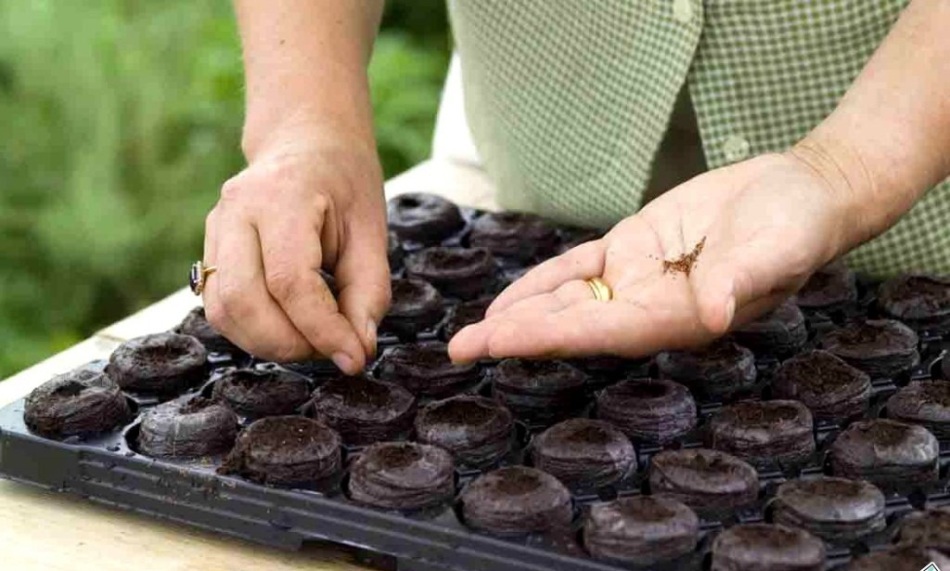 man plant seeds in peat pots
man plant seeds in peat pots If you sprout seeds on your own before planting them in open soil, then the end of January-March period is the best for this activity. As containers you will be able to:
- wooden boxes
- plastic and peat cups
- trays for eggs
- flower pots
- peat tablets
Be sure to stock up with the necessary amount of land from the plot and fertilizers. Mix them before dispensing into a seed container.
- Spend seedling seedlings on the balcony at a time when the temperature does not drop below 10-12 ℃.
- In the open ground, transplant them in the evening or on cloudy days. Home seedlings are not accustomed to bright sunlight.
- First plant the tomato seedlings, then peppers and eggplant, cucumbers in the last turn.
- Seeds of crops that require a lot of space for growth and maturation, sow into the soil covered with a film. In it, make punctures with wooden rods. Near them, tear the film so that the seeds can be buried in the soil.
This method is good for suppressing the growth of weeds and collecting rainwater directly in the wells with seeds. - So that the shoots appeared earlier, soak in the water seeds of pumpkin, cucumber, zucchini, squash. Go to the soil after the appearance of the embryo or the opening of the seeds.
- Seeds of sweet peppers, tomatoes, cabbage, grow into the ground on the windowsill in the winter months. Place them closer to the batteries. Remove weak shoots by pulling them.
Proponents of natural agriculture recommend charging seeds before planting their energy:
- take a handful or one dry seed under the tongue for a few seconds
- move them to the palm and cover the second for 7-9 seconds
- open the palms and substitute seeds for the sun
- dig out the hole with your hands and lowerin it without watering
- after 3 days, pour
- to plant cuttings. Remember the ground in the hole with the toes of
- . Do not remove the weeds around the fresh holes, cut them off better
Think about the order of the racesAssumption crops on his land. Keep records to the next year, optimally change the location of crops without losing their yield.
- Even at the height of the dacha season, it is appropriate to prepare a site for planting greens and vegetables that can ripen before the first colds.
- You need a plane cutter, shovel, rake to remove weeds, raking them, loosening the soil.
- Form the edges of the beds and spaces between them. These earthen mounds will help the moisture to remain in the desired area, and guests do not trample down your harvest.
Tips for gardeners to care for planting and eliminating pests
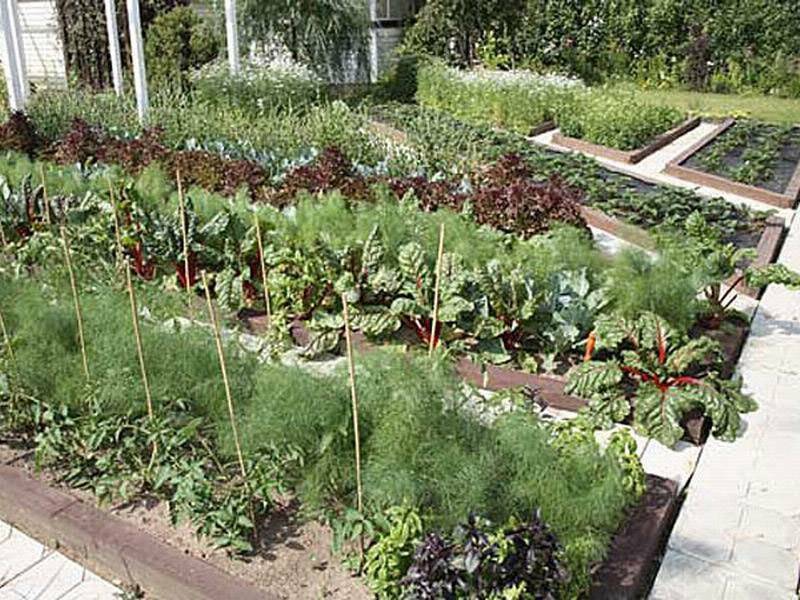 Well-maintained beds on the backyard of the
Well-maintained beds on the backyard of the - Create a network of tracks on the cottage with a hard surface. So it will be convenient to walk and take care of the plants.
- Regularly visit your summer residence and track the condition of plants. At the first or obvious signs of diseases, prepare water or dry solutions for the treatment of stems or soil under them. Carry out health-improving measures in accordance with the recommendations of agronomists.
Weeding is not only a way to eliminate weeds, but also loosening the soil to enrich it with oxygen and preserve moisture after rain / artificial irrigation.
- Leave at least one kind of weed between rows of vegetables, cereals, greens. They provide both shade, and moisture retention in the soil, and scaring off insect pests.
- If you can not often weed the garden, mow the grass on it.
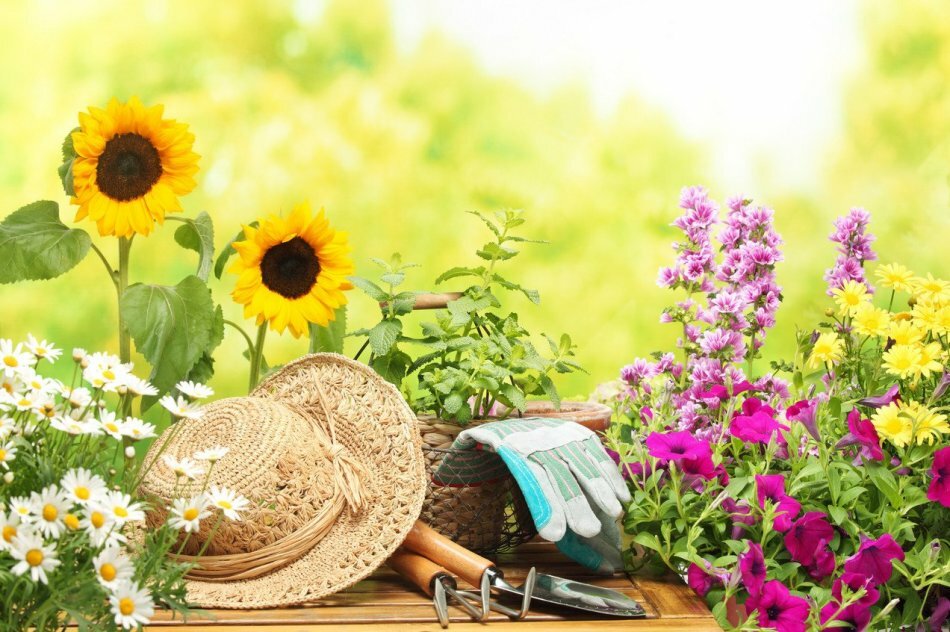 equipping gardener while caring for plants on the backyard of the
equipping gardener while caring for plants on the backyard of the Keep the fallen leaves and use them as mulch under strawberries, raspberries and vegetable crops. Sprinkle last year's material with a thin film. It will muffle the growth of weeds of tambourine and woodworm.
- In the dry period, water the beds at least once a day before the peak of solar activity, that is, either early in the morning, or in the evening closer to sunset.
- Install a drip irrigation system or water leakage through gutters. Consider the culture of the plant, for example, lush white cabbage is better to feed it to the root.
- From many pests help ash, wood dust, soapy water. These funds will suit those who are for the ecological cultivation of plants on the site and have the opportunity to visit it every day.
- Feed organic fertilizers with cabbage, which has large lower leaves and begins to gain strength to form heads.
- Water and feed carrots, cucumbers and zucchini until they are collected.
Tips for truck farmers to harvest and prepare the ground for rest
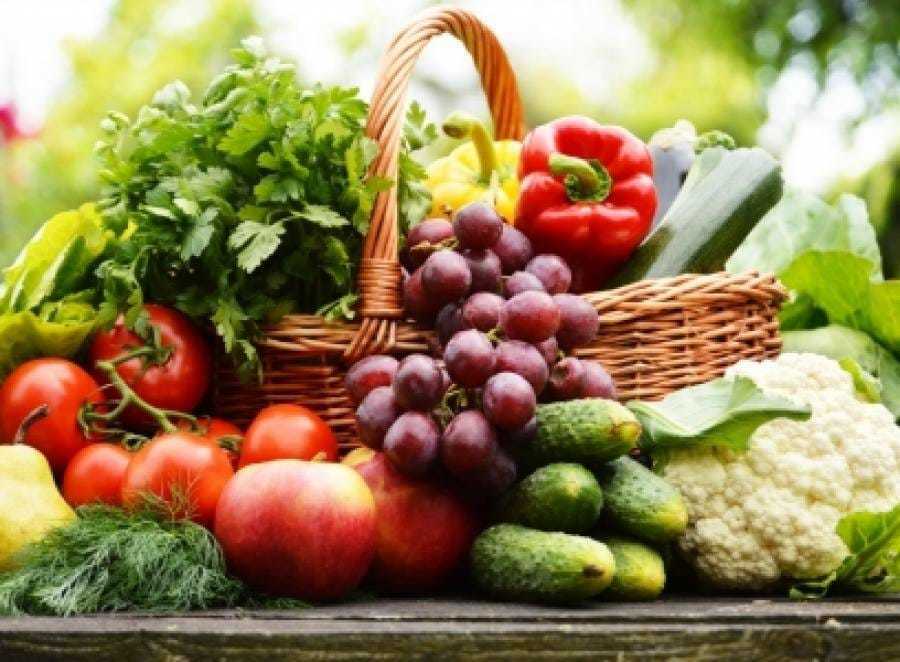 collected basket with vegetables, herbs and berries from its site
collected basket with vegetables, herbs and berries from its site - . According to the lunar calendar, plan the harvesting of a crop.
- Put on your table fresh earth gifts and eat them for as long as the collection period lasts.
- Have in your arsenal baskets, stools, garden scissors, ladder-ladder. They will help to collect fruits, vegetables, berries with minimal losses and your fatigue.
- Trees and shrubs spend shortening young branches, so that they have accumulated juice and become cold before the cold. Cut dry and sick branches.
- After harvesting fruits and berries, feed trees and shrubs with organic fertilizers. Remove the weeds and root processes.
Strawberries cut the antennae.
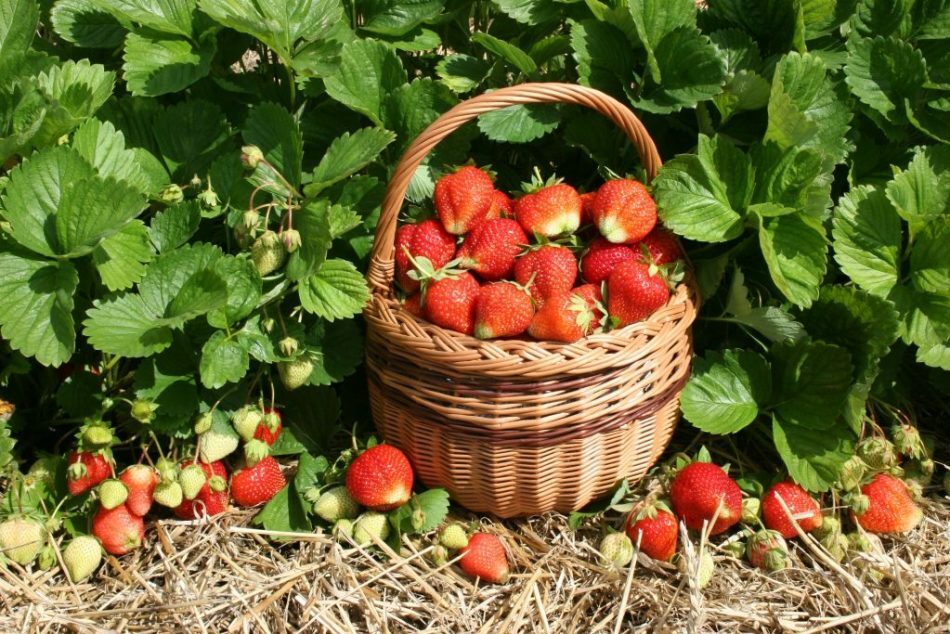 fragrant strawberries grown on their site
fragrant strawberries grown on their site Prepare a site for planting its young shoots. Pour peat and humus onto it, mix them thoroughly with the ground, dig them up. Plant it so that the roots of the strawberries do not bend.
Before harvesting the grapes, feed it with organic fertilizers and cut off the tops, leaving 4-5 leaves over the topmost bunch.
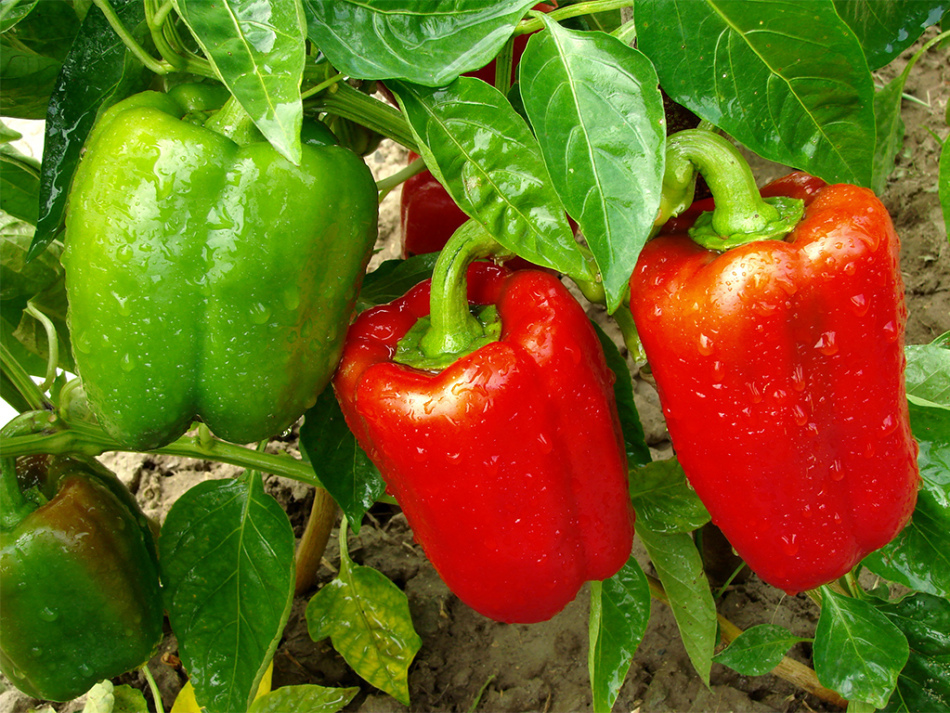 juicy Bulgarian pepper on the beds
juicy Bulgarian pepper on the beds In the middle of August, remove the top inflorescences from tomatoes, aubergines and pepper to make the fruits ripen.
- When forming fog, cover tomatoes, cucumbers and eggplant with polyethylene. To do this, organize on their beds special structures that resemble greenhouses.
- Two weeks before harvesting potatoes, mow the tops. So its fruits will ripen better. This advice is ignored for early varieties.
- Combine tomatoes, eggplant and pepper with slightly stalks. For tomatoes and peppers, arrange a place well-lit by the sun for ripening.
- Collect cucumbers early in the morning. Avoid turning over the lashes. Frequency of collection - every 48-72 hours, except for rainy and cloudy days.
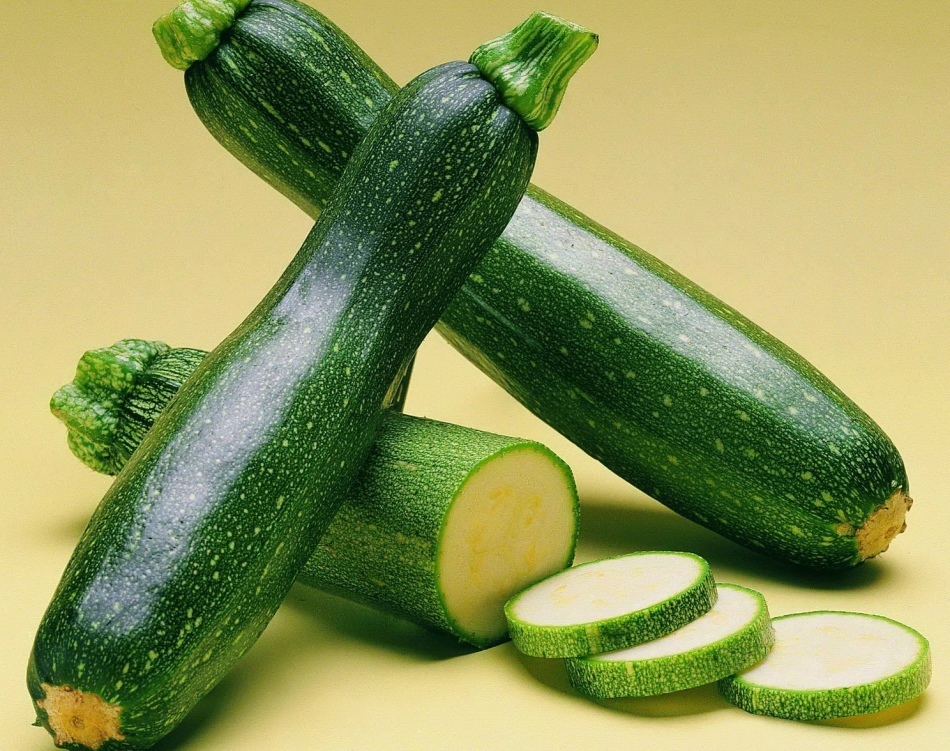 zucchini, picked from the home garden, to make a saute
zucchini, picked from the home garden, to make a saute Squash, depending on the purpose for further use, collect this:
- for eating - 1/3 of the expected size of the
- for caviar preparation and preservation - 2/3 of the fully ripened
- for storage in the cellar - fully ripened, but without cracks and marks of decay
Pears and apples peeled off with a stick with a net on the end. Then they are suitable for long-term storage.
- Raspberries, strawberries, sea buckthorn, gooseberry pick berries, and all kinds of currants and grapes - bunches.
- When all the fruits are collected from the site, propolite the earth, collect dry twigs and weeds, add humus and dig it to the ground.
- After harvesting in the greenhouse, remove all vegetation from it, loosen the soil and disinfect.
Combine the harvest time with the care of the flower garden:
- plant young shoots
- feed
- cut the lower leaves to preserve the health of plants
Earlier we considered the features of cultivating decorative flowers in the garden and on the plot. Look here, here and here.
And also deepened in the features of obtaining a good harvest of potatoes, salad.
Tips for collecting and drying the seeds of the new crop, organizing their proper storage
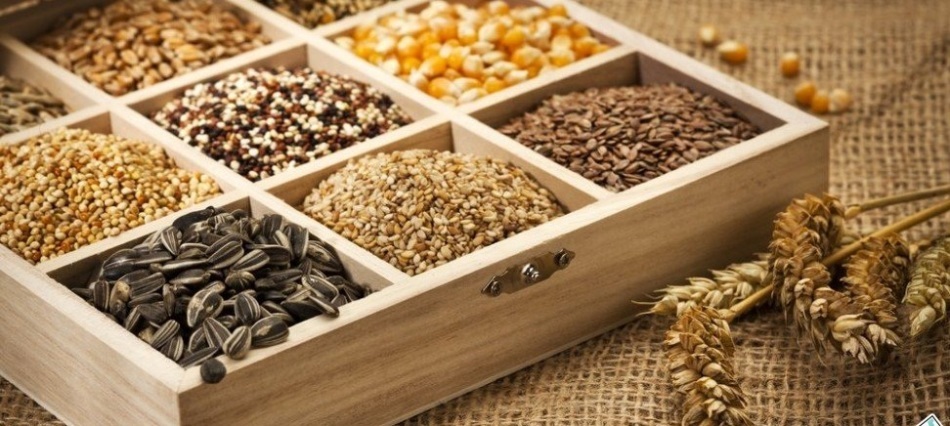 seeds are laid out in compartments in a wooden storage box
seeds are laid out in compartments in a wooden storage box To collect the seeds from your crop, leave the largest specimens of the crop until full maturation. For example:
- plant a large carrot or bulb in spring and wait for them to bloom.
- on completion of its head color will change to brown.
- cut it off and crush it over paper or polyethylene.
- seeds fold in cloth bags and store in a warm room.
Of the large specimens of pumpkin, zucchini, cucumber, tomato, pepper seeds are extracted in the pulp. Therefore, arrange them to dry under a canopy in a draft.
For storing seeds, use:
- cotton bags
- paper bags
- glass jars with lids
Each culture has its own storage time of seeds, during which the best qualities of the plant remain. For example, seeds:
- tomatoes, cabbage, beets, radish and turnip - 4 years
- zucchini, cucumber - 5 years
- salad, carrots, pepper, eggplant - 3 years
- corn, peas, beans, beans - 5 years
- fennel,rhubarb, parsley - 2 years.
Optimal conditions for seed storage - 50% humidity and air temperature +14 - 15 ℃ without any changes. Ideal places - the lower drawers of wardrobes in living rooms, storage in the apartment.
- Bags or bags with seeds should be wrapped in polyethylene or foil. So the influx of air to them will be limited and germination will not start ahead of time.
- Do not freeze dry seeds, otherwise they will not sprout long after sowing.
- Prepare the seeds for sowing. Put them in a plastic bag in hot water for a third of an hour.
Tips for harvesting for winter, conservation and freezing of crops
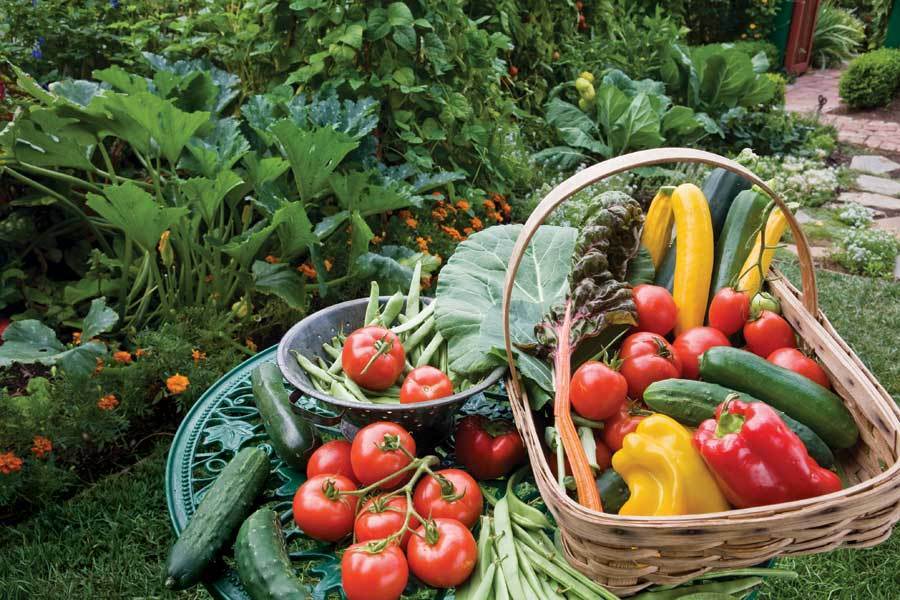 collected vegetables for conservation for the winter
collected vegetables for conservation for the winter - Dry some fruits and berries to drink fragrant compotes and prepare fragrant pastries in winter. Tips for drying fruits and berries - cherries, apricots, black currants, plums, apples.
- For pickling and preserving in the jar, choose smooth fruits. Recipes from each landlady have their own, but if you want to diversify them, look here, here, here, here, here, here. Look at the calendar of favorable days for conservation.
Cook the tomato from the tomatoes. It is well kept in the glass for many years.
- With the proliferation of freezers, more and more owners are practicing frosting of berries, greens, and vegetable slicing. Many tips you will find about green beans, mushrooms, green onions, watermelons.
Tips for gardeners to store vegetables and fruits and care for the site
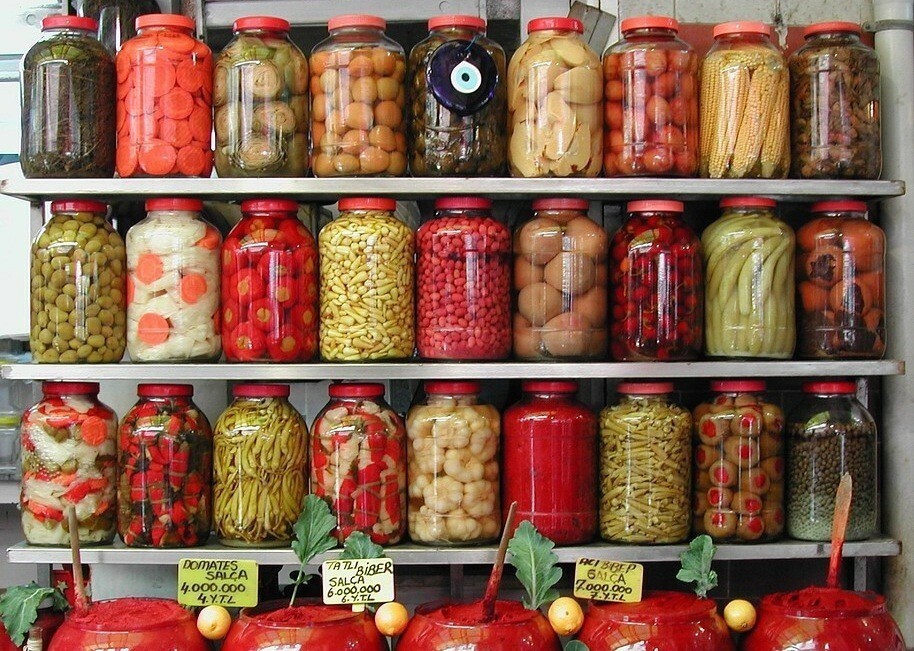 beautiful shelves with canned goods from the infield of the infield
beautiful shelves with canned goods from the infield of the infield - From January, carefully monitor the condition of fruits and roots in the basement. Those of them that start to deteriorate, use in compotes, salads in the first place.
- Harvest in the room where it is stored.
- Tips for storing vegetables in the cellar read in detail in the article here in the refrigerator - read here, on storage of fruit in the refrigerator, read here how to store greens in the refrigerator read here.
- Varieties of apples mackintosh, antonovka, seedless by the middle of winter should disappear from your cellars, as their shelf life has come to an end.
- Around the fruit trees, heap up the heaps of snow so that the field mice do not damage their bark.
- Site with young seedlings dig a ditch depth of 5 cm. Then the rodents will not reach their tender trunks. From the hare, put a grid fence up to 2 meters high.
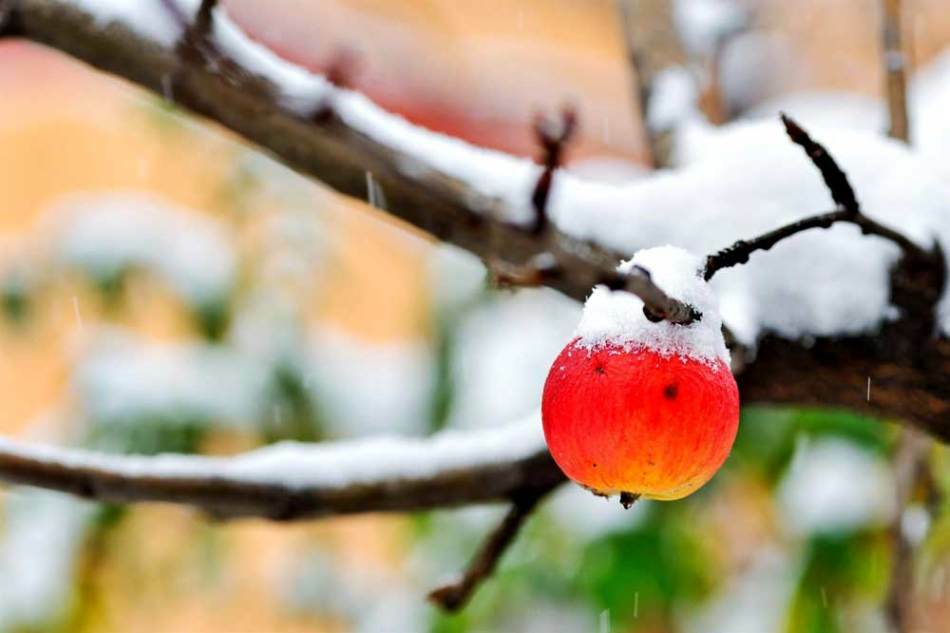 apple tree in winter with a frozen apple on a branch
apple tree in winter with a frozen apple on a branch In a severe frost, organize the maximum shelter for trees and shrubs with snow. During its filling on the trees, remember that their branches in the frost are more fragile and prone to breaking from any pressure.
- When sticking snow on the branches and waiting for a significant drop in temperature, shake the snow with a long stick with the rag on the end.
- Insulate the entrance to the cellar and the burlap sacks if the outside temperature drops below -30 ℃.
- Construct a bird feeder in winter and regularly sprinkle seeds on them. So the birds will nest closer to your site and save you and the site from insect pests in the summer.
- Collect the ashes in plastic bags if you live in the countryside and drown the stove with wood. It will come in handy to you in the spring as a fertilizer for the soil.
- Organize the compost pile on the site. After a year or two fertilize the soil after harvest.
- If it is possible to import rotten cow dung, use it only to fertilize the soil before resting.
Communicating with the land and cultivating crops on your site requires care and painstaking work. With experience, you will have your secrets both in caring for plants, and harvesting them for the winter.
The main thing is to act and track the results. Let your site give good harvests and nourish you with strength!
